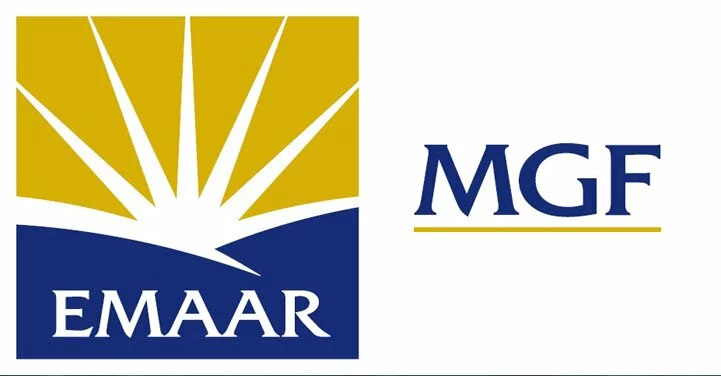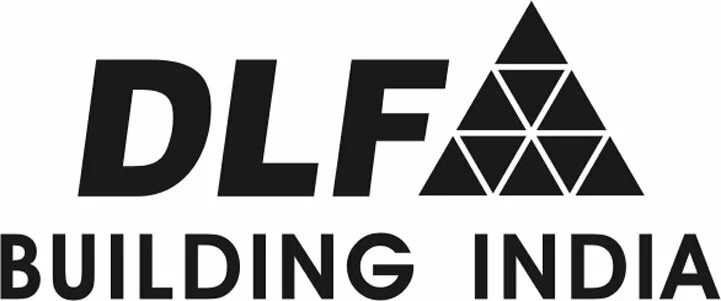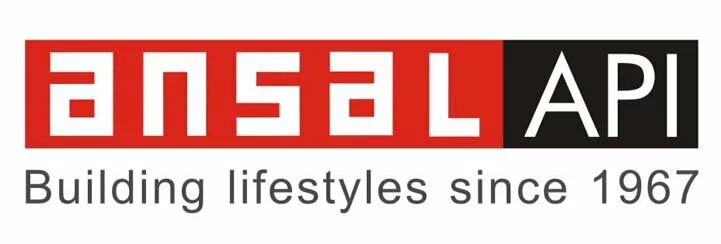Home Loan From Government Bank Vs Private Bank – What’s The Difference
Important article about Home Loan: A Complete Guide
Public sector bank have better consumer related loan policies than private banks. In the long term, you would save a lot on interest with Government sector bank.
We always wonder about what could be the difference between taking a loan from a public sector bank and a private bank. The young generation always prefers private banks whereas our parents would always guide us to get it from a public sector bank.
We are listing down certain important points and the terms and conditions which can make a huge difference to your decision here.
There are various types of loan and for varying duration. I would take an example of a home loan to compare the two types of banks since most of the terms and conditions remain same for all types of loan.
Loan from public sector or private sector bank? Evaluate costs, loan process, after sales service with re-payment, pre-payment and flexibility
| BASIS OF DIFFERENTIATION | Private Sector Bank (E.g ICICI, HDFC, Citibank etc.) | Public Sector Bank (E.g. SBI, PNB etc.) | |
|
Processing fees This fees is charged to analyse, evaluate and do the paperwork for your loan processing. Even though the bank is selling you the product, they don’t take this cost on them. |
There are two methods of charging this fees. One is a lump sum amount based on the amount of loan (e.g. INR 5000 for loans upto 20 lakhs) and other is a percentage of the total loan amount (0.25% of the total loan amount).
This fees is one of the major difference that I have seen between public and private sector banks. Since, most of the private sector bank depend on the their DSA (Direct selling agents) to get the loan consumer to their doorstep, they generally keep this fees high to pay a cut of this fees to their agents. For example: Private banks normally charge 0.50% – 1% as processing fees for any loan. Once they sanction the loan, they have to pay out the commission to the DSA which is paid out to them partially from this processing fees. |
On the other hand, public sector banks are NOT aggressive in entertaining DSAs and hence have their processing fees generally low and starts from 0.25% or a fixed amount.
So, I would say that approach a public sector bank on your own if you want to save some money!! |
|
| Paper work, efficiency and turnaround time | Better management and faster processing times than their counterparts. Their DSA’s have strict sales target every month and hence move faster to improve their performances. | They are NOT bothered about their performances most of the time. So, they move a bit slow but are steady in their process. | |
| Interest rates fluctuation |
The interest rate policies are more transparent in public sector banks than private banks.
You would have heard that interest rates are increased by private bank as soon as RBI (Reserve bank of India) increases its REPO rate, but do NOT decrease with same speed when the REPO rate is decreased at least for existing loan customers. |
This is not the case in public sector banks. They keep same policies for all loan customers and decreased rate is effective for existing customers also almost immediately. | |
| Prepayment charges |
Read the terms and conditions carefully, they DO NOT allow you to prepay the loan without the prepayment charges. Obviously, they are loosing interest money if they allow you to prepay.
So, to mitigate the loss, they generally charge you 2% of the OUTSTANDING loan. Yes, I said OUTSTANDING. i.e. if you have an outstanding loan of 10 lakhs and you are making a pre- payment of 2 lakhs, you need to pay them 2% of 8 lakhs as pre-payment charges!! That’s a whopping Rs. 16,000 penalty to reduce your loan by 2 lakhs. |
Public sector banks do NOT charge you a penny to prepay (read their terms and conditions). So, they score a plus point for me here. | |
| Prepayment Period |
Hmm..you read about pre-payment charges. There is one more clause hidden in your private bank’s loan papers i.e. prepayment period.
Normally, they put up a clause that you cannot pre-pay ANY amount before completing 180 day (6 months) of your loan. Clever…because the EMI’s are designed in a way that the interest portion is maximum at initial stages of loan, this helps the bank earn maximum interest before you actually make any pre-payment. |
Good news: They do NOT have any such clause. You can start pre-paying from day 2 of loan itself.
At-least I do not know of any bank which has a minimum period clause in this space. Another big plus towards public sector banks. |
|
| Pre-payment Amount | They are too concerned about pre-payments as it is a loss of income. Generally, you cannot pre-pay more than 25% of outstanding loan in a single year. i.e. if you have taken a loan of 10 lakhs, you cannot pre-pay more than 2.5 lakhs in a single year. |
Again, no such clause here. You can pre-pay any amount which you like.
This is helpful if you have got some lump sum amount from some other source of income and want to reduce your loan. |
|
| Charges for dealing in branch office |
Got the loan, but don’t come to branch. If you do, you will be charged for any transaction you do at their branch. Most of the private sector banks charge an amount of Rs. 100 plus service tax for entertaining you at their branch after certain number of visits.
They want you to use their ATM’s and online banking to transact. Off course, it saves their operations cost. |
No such policy here again. Visit them any number of times and they will be able to help you. |
Home Loan Interest Rates of key Banks and Housing Companies Operating in India*
| Bank/Lender Name |
Home Loan Interest Rate
(for Rs. |
Loan Processing Fees |
| HDFC Bank | 9.45% to 10.45% | 0.5% of loan amt. or Max. Rs. 10,000 |
| ICICI Bank | 9.40% to 9.70% | Starts from 0.5% of loan amt. |
| Axis Bank | 9.45% to 9.6% | Min. Rs. 10,000 at 1% of loan amt. |
| SBI | 9.45% onwards | Min. Rs. 2000 and max. Rs. 10000 (Provide Women Benefit of 0.05%) |
| India Bulls | 9.95% to 11.1% | 0.5% to 1% of loan amt. Min. 7,500 |
| DHFL | 9.75% to 10% | 1% to 1.5% of loan amt. |
| IDBI Bank | 9.6% onwards | Zero to 1% of loan amount |
| LIC Housing Finance | 9.8% to 11.7% | Rs. 10000 to Rs. 15000 |
| Punjab National Bank | 9.45% onwards | Nil |
| PNB Housing Finance | 9.75% to 10.45% | Nil till DEC 2016 |
| Tata Capital | 9.7% to 10.25% | Min. Rs. 5,000 to 0.25% of loan amt. |
| Bank of India | 9.70% to 9.95% |
Min. 1000 and Max. Rs. 20,000
(Provide Women Benefit of 0.05%) |
| Syndicate Bank | 9.65% onwards | Min. 500 to Max. 5,000 |
| United Bank | 9.6% onwards | Varies based on applicant profile |
| Canara Bank | 9.65% to 9.75% | Varies based on applicant profile |
FAQ’s
1. For what purposes can I seek a first time home loan?
You can generally seek a first time home loan for buying a house or a flat, renovation, extension and repairs to your existing house. Most banks have a separate policy for those who are going for a second house. Please remember to seek specific clarifications on the above-mentioned issues from your commercial bank.
2. How will your bank decide your home loan eligibility?
Your bank will assess your repayment capacity while deciding the home loan eligibility. Repayment capacity is based on your monthly disposable / surplus income, (which in turn is based on factors such as total monthly income / surplus less monthly expenses) and other factors like spouse’s income, assets, liabilities, stability of income etc. The main concern of the bank is to make sure that you comfortably repay the loan on time and ensure end use. The higher the monthly disposable income, higher will be the amount you will be eligible for loan. Typically a bank assumes that about 55-60 % of your monthly disposable / surplus income is available for repayment of loan. However, some banks calculate the income available for EMI payments based on an individual’s gross income and not on his disposable income.
The amount of the loan depends on the tenure of the loan and the rate of interest also as these variables determine your monthly outgo / outflow which in turn depends on your disposable income. Banks generally fix an upper age limit for home loan applicants.
3. What is an EMI?
You repay the loan in Equated Monthly Installments (EMIs) comprising both principal and interest. Repayment by way of EMI starts from the month following the month in which you take full disbursement.
4. What documents are generally sought for a loan approval?
In addition to all legal documents relating to the house being bought, banks will also ask you to submit Identity and Residence Proof, latest salary slip ( authenticated by the employer and self-attested for employees ) and Form 16 ( for business persons/ self-employed ) and last 6 months bank statements / Balance Sheet, as applicable . You also need to submit the completed application form along with your photograph. Loan applications form would give a checklist of documents to be attached with the application.
Do not be in a hurry to seal the deal quickly.
Please do discuss and seek more information on any waivers in terms and conditions provided by the commercial bank in this regard. For example some banks insist on submission of Life Insurance Policies of the borrower / guarantor equal to the loan amount assigned in favour of the commercial bank. There are usually amount ceilings for this condition which can also be waived by appropriate authority. Please read the fine print of the bank’s scheme carefully and seek clarifications.
5. What are the different interest rate options offered by banks?
Banks generally offer either of the following loan options: Floating Rate Home Loans and Fixed Rate Home Loans. For a Fixed Rate Loan, the rate of interest is fixed either for the entire tenure of the loan or a certain part of the tenure of the loan. In case of a pure fixed loan, the EMI due to the bank remains constant. If a bank offers a Loan which is fixed only for a certain period of the tenure of the loan, please try to elicit information from the bank whether the rates may be raised after the period (reset clause). You may try to negotiate a lock-in that should include the rate that you have agreed upon initially and the period the lock-in lasts.
Hence, the EMI of a fixed rate loan is known in advance. This is the cash outflow that can be planned for at the outset of the loan. If the inflation and the interest rate in the economy move up over the years, a fixed EMI is attractively stagnant and is easier to plan for. However, if you have fixed EMI, any reduction in interest rates in the market, will not benefit you.
Determinants of floating rate:
The EMI of a floating rate loan changes with changes in market interest rates. If market rates increase, your repayment increases. When rates fall, your dues also fall. The floating interest rate is made up of two parts: the index and the spread. The index is a measure of interest rates generally (based on say, government securities prices), and the spread is an extra amount that the banker adds to cover credit risk, profit mark-up etc. The amount of the spread may differ from one lender to another, but it is usually constant over the life of the loan. If the index rate moves up, so does your interest rate in most circumstances and you will have to pay a higher EMI. Conversely, if the interest rate moves down, your EMI amount should be lower.
Also, sometimes banks make some adjustments so that your EMI remains constant. In such cases, when a lender increases the floating interest rate, the tenure of the loan is increased (and EMI kept constant).
Some lenders also base their floating rates on their Benchmark Prime Lending Rates (BPLR). You should ask what index will be used for setting the floating rate, how it has generally fluctuated in the past, and where it is published/disclosed. However, the past fluctuation of any index is not a guarantee for its future behavior.
Flexibility in EMI:
Some banks also offer their customers flexible repayment options. Here the EMIs are unequal. In step-up loans, the EMI is low initially and increases as years roll by (balloon repayment). In step-down loans, EMI is high initially and decreases as years roll by.
Step-up option is convenient for borrowers who are in the beginning of their careers. Step-down loan option is useful for borrowers who are close to their retirement years and currently make good money.
6. What is monthly reducing balances method?
Borrowers benefit more from a loan that’s calculated on a monthly reducing basis than on an annual basis. In case of monthly resets, interest is calculated on the outstanding principal balance for that month. The principal paid is deducted from the opening principal outstanding balance to arrive at the opening principal for the next month and interest is computed on the new, reduced principal outstanding. In case of annual resets, principal paid is adjusted only at the end of the year. Hence, you continue to pay interest on a portion of the principal that has been paid back to the lender.
7. How does tenure affect cost of loan?
The longer the tenure of the loan, the lesser will be your monthly EMI outflow. Shorter tenures mean greater EMI burden, but your loan is repaid faster. If you have a short-term cash flow mismatch, your bank may increase the tenure of the loan, and your EMI burden comes down. But longer tenures mean payment of larger interest towards the loan and make it more expensive.
8. What is an amortization schedule?
This is a table that gives details of the periodic principal and interest payments on a loan and the amount outstanding at any point of time. It also shows the gradual decrease of the loan balance until it reaches zero.
9. What is pre-EMI interest?
Sometimes loan is disbursed in instalments, depending on the stages of completion of the housing project. Pending final disbursement, you may be required to pay interest only on the portion of the loan disbursed. This interest called pre-EMI interest. Pre-EMI interest is payable every month from the date of each disbursement up to the date of commencement of EMI.
However, many banks offer a special facility whereby customers can choose the instalments they wish to pay for under construction properties till the time the property is ready for possession. Anything paid over and above the interest by the customer goes towards Principal repayment. The customer benefits by starting EMI payment earlier and hence repays the loan faster. Please check with your banker whether this facility is available before availing of the loan.
10. What security will you have to provide?
The security for a housing loan is typically a first mortgage of the property, normally by way of deposit of title deeds. Banks also sometimes ask for other collateral security as may be necessary. Some banks insist on margin / down payment (borrowers contribution to the creation of an asset) to be maintained / made also.
Collateral security assigned to your bank could be life insurance policies, the surrender value of which is set at a certain percentage to the loan amount, guarantees from solvent guarantors, pledge of shares/ securities and investments like KVP/ NSC etc. that are acceptable to your banker. Banks would also require you to ensure that the title to the property is free from any encumbrance. (i.e., there should not be any existing mortgage, loan or litigation, which is likely to affect the title to the property adversely).
11. What precautions do you need to take if you are purchasing a property that is not a newly built one?
Ensure that the documents being provided to you are not colour photocopies. Check the internet for other modus operandi to fraud and ensure clear title to the asset. Seek advice only from authentic sources such as your bank.
Get the no encumbrance certificate to find the true title holder and if it is mortgaged to any financier. Obtain all tax papers to ensure that all documents are up to date.
12. Can you repay your loan ahead of schedule? Is pre-payment of loan allowed?
Yes, most banks allow you to repay the loan ahead of schedule by making lump sum payments. However, many banks charge early repayment penalties up to 2-3% of the principal amount outstanding. Prepayment penalty may vary according to the reasons and source of funds – if you obtain a loan from another bank for pre-payment the charges are usually higher than when you pay from your own sources. However, you may credit more than your EMI amount into your loan account on a periodic basis and bring down your interest burden as and when funds are available with you. Most banks do not charge a pre-payment penalty if you deposit more than your EMI payable on a periodic basis. Please check such stipulations while availing the loan.
13. What are Switch over charges/ balances transfer charges?
When other banks reduce the interest rate, you may prefer to close your account with the bank with whom you are banking, to avail of the loan from the bank offering reduced rates of interest. You have to pay pre-payment charges for doing so. In order to ensure that their customers do not approach other banks for availing reduced interest rates, banks allow customers to switch over from a higher interest loan to a lower interest loan by paying a switch over fees which is lesser than the pre-payment charges. Generally switchover fee is taken as percentage of the outstanding loan amount.
Keep up-dating yourself on various changes in the home loan market. Visit the branch, discuss with the officials to get the best out of any changes in the home loan scenario.
14. Do you get a tax benefit on the loan?
Yes. Resident Indians are eligible for certain tax benefits on both principal and interest components of a loan under the Income Tax Act, 1961. Under the current laws, you are entitled to an income tax rebate for interest repayment up to Rs. 1,50,000 /- per annum. Moreover, you can get added tax benefits under Section 80 C on repayment of principal amount up to Rs. 1,00,000 /- per annum.



























One thought on “Home Loan From Government Bank Vs Private Bank – What’s The Difference”
[…] Read the related article – Home Loan From Government Bank Vs Private Bank – What’s The Difference? […]
Comments are closed.